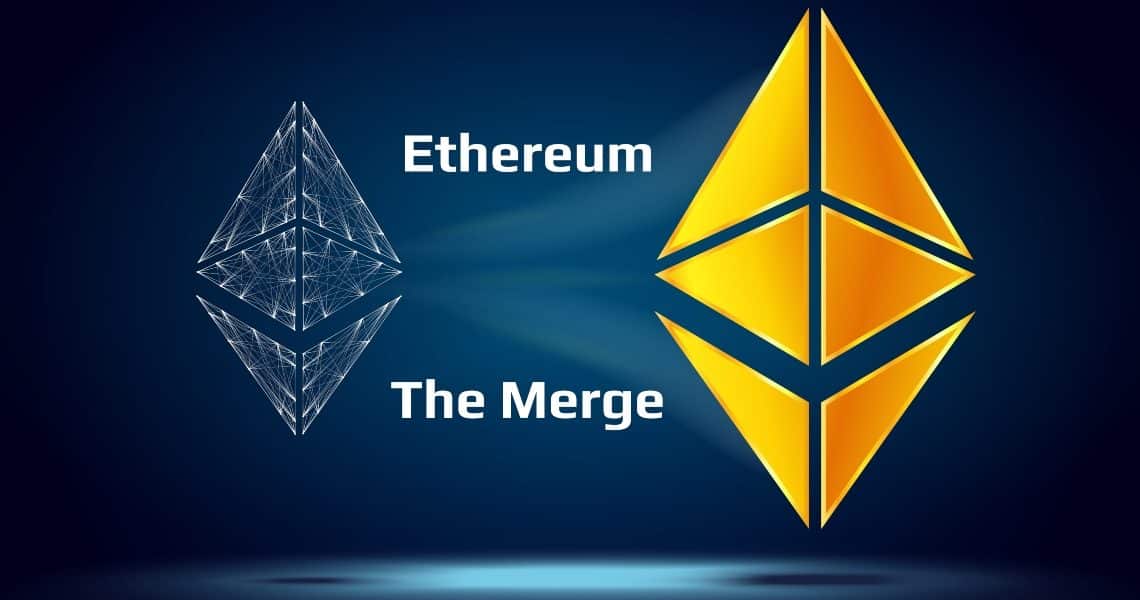on the crypto

At 06:42 UTC, at block 15537393, the mining difficulty reached 58.750.750.000.000.000.000.000.000.000.000 and the merger of both blockchains took place.
"Happy merger to all," wrote Vitalik Buterin, co-creator of Ethereum, on his Twitter account. He added: “This is a great moment for the Ethereum ecosystem. Everyone who helped make the merger a reality should be very proud today ”.
The proof-of-stake network will now store the transactions that occur. And the Ethereum proof-of-work (PoW) story will continue to exist on the 1.0 network.
As mentioned on August 24 in an explanatory article, the Merge happened from block to block. Here's how the Ethereum Foundation explains it on its blog:
Once the execution level reaches or exceeds the total difficulty of the terminal, the next block will be produced by a Beacon chain validator [and not a proof-of-work miner]. - Ethereum Foundation.
At the time of this publication, Ethereum 2.0 has 427.174 validator nodes. These include both independent users and those managed by a pool of bettors.
Each validator has 32 Ether (quotation ETH) in piling. Together they total 13.669.452 ETH, which means that over 10% of the ETH in circulation is deposited in the Ethereum 2.0 smart contract.
For at least another 6 months, these PFs will remain blocked and will then be progressively released. This is to avoid massive sales of the cryptocurrency. Recall that many have deposited their ETH in Ethereum 2.0 since December 2020, when it was enabled staking.
What changes in Ethereum after the merger?
A recent article explains the most notable changes after this update. One of these changes concerns energy consumption. By abandoning mining (validating transactions through computational work) and replacing it with the staking (validation through money deposited in a smart contract), the energy required is significantly reduced.
Proof-of-stake proponents argue that it increases energy efficiency. Opponents, on the other hand, criticize the fact that the network becomes - according to them - more insecure and easier to control by an external agent, such as a government.
Another important change concerns Ethereum's monetary policy. Until the merger, ETH was an inflationary currency. As of the merger, most blocks are expected to burn more ETH than issued, making the system deflationary.
What changes for Ethereum users?
Ethereum users should not perceive any change in their user experience, neither for better nor for worse. The merger only involved a change in the consensus algorithm - the way the network confirms transactions and issues new coins.
In recent months, several people - including many influencers - have been promoting the idea that the merger would increase the scalability of the network. But this is not true. Ethereum trading is neither faster nor cheaper thanks to Merge. In fact, the co-creator of the network himself, Vitalik Buterin, is adamant that scalability will occur in second-tier solutions such as rollups, but not in the core network.
In light of this, it would not be unusual for many in the next few days to say that "Ethereum 2.0 was a failure" when they see that the fees are not reducing and the network is not faster. In reality, these people simply had wrong expectations.
Other cryptocurrencies could benefit from the Ethereum merger
With Ethereum 2.0 fully operational, it remains to be seen how it will behave and how it will affect the entire cryptocurrency ecosystem.
Many mining facilities used to mine Ethereum are now waiting to be connected to other networks, so the Ethereum merger could be a catalyst for boosting other cryptocurrencies.
